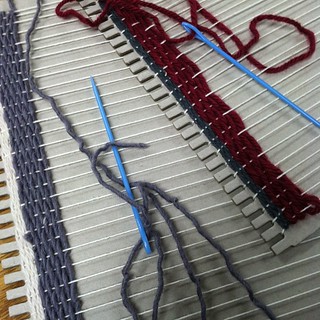 |
| This button has a shank that utilizes two black beads. |
You've probably already noted "self shanks" -- where the hole is through a bump on the back of your button. You may also have come across pin shanks: just like it sounds, a metal pin with head is passed through a single hole, from the front to the back of the button, and bent into a loop.
There's more than one way to create a button shank.
I've used a single, orange, linen thread so you can see what's going on. I'd recommend multi-strands, if you're sewing -- or a ribbon, if you are familiar with tying buttons onto fiber garments, so that they can be easily removed for washing. You may choose to leave the ends long enough to sew through your garment; you have options.
The thread is passed from the back of the button, through one hole. Then it's passed through the bead, and back through the button hole, to the back of the button. The first bead now forms an anchor pin.
The thread is now passed from back to front, through the second button hole. Then, through the second bead and back through the button hole. Both ends of the orange thread are now at the back of the button: even them out and snug them up.
Pass each thread under the the loop that was formed in between the holes. You will tie them in a knot, at the middle. When you fold them across each other, to form the knot, you can also fold them over, and capture, any thread that forms the loop between the holes.
A little dot of superglue or fray check won't hurt, to secure the knot.
You might have worked with more than one thread. You have a choice, now. You can use the long ends to attach the button to your fabric, or you can snip them each to about 1/3 of an inch in length, and then, with your sewing thread, sew over the top of them as you attach the button to your garment, sewing through the center loop that you created.
For more art buttons
vika.etsy.com
vika.etsy.com







